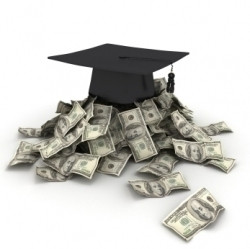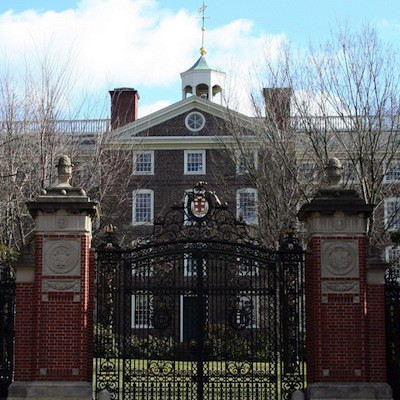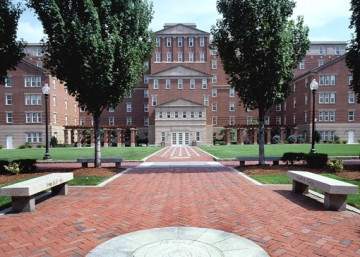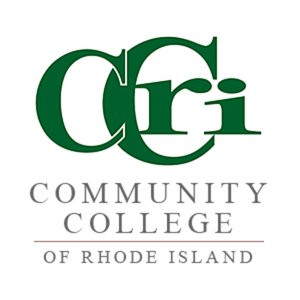Ranking the Highest Student Loan Default Rates in RI
Monday, November 04, 2013
The U.S. Department of Education recently released its annual student loan default data, and while the latest three-year default rate average for Rhode Island students at 12.8% is below the national average of 14.7%, 2,614 Rhode Island students defaulted on their loans from the FY 2010 cohort.
See Which Schools In Rhode Island Had the Highest Number of Students Defaulting BELOW
"Defaulting on a student loan has a lot of serious consequences. Students and families should be very careful to borrow within their means and make sure they will be able to afford their monthly payments prior to taking on any debt. Federal student loans aren’t dischargeable in bankruptcy," said Chad Pastorius with the Rhode Island Student Loan Authority. "If you default on a federal student loan you may be sued, have your wages garnished or your federal and state income tax refunds withheld."
Pastorius continued, "Defaulting also negatively affects credit, which can lead to a number of problems, including a person’s ability to secure a mortgage, rent an apartment, and in the worst cases, get a job since some employers check credit before making hiring decisions. On top of all of this, a student becomes ineligible for any future federal student aid if they have a defaulted federal student loan."
GET THE LATEST BREAKING NEWS HERE -- SIGN UP FOR GOLOCAL FREE DAILY EBLASTDOE Looking at Longer Cohort Data - Rhode Island Seeing Signs of Improvement
The Department of Education is replacing its calculations from two-year to three-year cohorts as required by the Higher Education Opportunity Act of 2008. Congress included this provision in the law because more borrowers default after the two-year monitoring period -- the three-year period better reflects the percentage of borrowers who ultimately default on their federal student loans.
“The growing number of students who have defaulted on their federal student loans is troubling,” U.S. Secretary of Education Arne Duncan said. “The Department will continue to work with institutions and borrowers to ensure that student debt is affordable. We remain committed to building a shared partnership with states, local governments, institutions, and students—as well as the business, labor, and philanthropic leaders—to improve college affordability for millions of students and families.”
Overall, the national two-year cohort default rate rose from 9.1 percent for FY 2010 to 10 percent for FY 2011. The three-year cohort default rate rose from 13.4 percent for FY 2009 to 14.7 percent for FY 2010
"We are yet to see a reduction in student borrowing so it's hard to see how we will see a decline in loan defaults without better economic conditions and a more robust job market for recent college graduates," said Pastorius.
Still, Pastorius saw signs of hope in Rhode Island.
"In Rhode Island, the state schools, URI, RIC, and CCRI, along with private schools such as Roger Williams University, have frozen tuition. Many schools have introduced financial literacy education programs and some have dedicated additional resources to counseling borrowers before and during repayment," said Pastorius. "These efforts have had success at some schools here in the state as evidenced by their declining cohort default rates in an environment where rates are increasing on the state level and nationally.
Avoiding Default
"Borrowers experiencing financial hardship who stay in contact with their loan servicer and learn of options available to them typically do not default on their loans. Federal Stafford loans, which are what the 2 and 3 year cohort defaults rates look at, have income based repayment plans, extended repayment plans which allow borrowers to extend their repayment term from 10 to up to 25 years, and hardship forbearances," said Pastorius.
He continued, "RISLA provides repayment counseling services to schools to assist with informing borrowers of these and other options that can help borrowers avoid defaulting on their loan obligations and the consequences that go along with default. RISLA also provides software to schools to help them identify borrowers in trouble and manage the repayment performance of former students."
Related Slideshow: SLIDES: Ranking the Highest Student Loan Default Rates in RI
The U.S. Department of Education announced the official FY 2011 two-year and official FY 2010 three-year federal student loan cohort default rates (CDR).
The national two-year cohort default rate rose from 9.1 percent for FY 2010 to 10 percent for FY 2011. The three-year cohort default rate rose from 13.4 percent for FY 2009 to 14.7 percent for FY 2010.
Below are the FY 2010 default rates for all post-secondary schools in Rhode Island listed with the Department of Education, from lowest default rates -- to the highest.
Related Articles
- Rhode Island Student Loan Debt 9th Highest in Country
- Russell Moore: Are Student Loans The New Indentured Servitude?
- Russell Moore: Colleges Are The Culprit In Student Loan Debacle
- Can RI’s Student Loan Crisis be Solved?
- Clock Ticking on Student Loan Time Bomb
- LEGAL MATTERS: Why Paying Off Student Loans Matters More
- New Effort Underway to Tackle Student Loan Debt
- NEW: Reed Unveils Plan to Prevent Student Loan Rate Hike







































